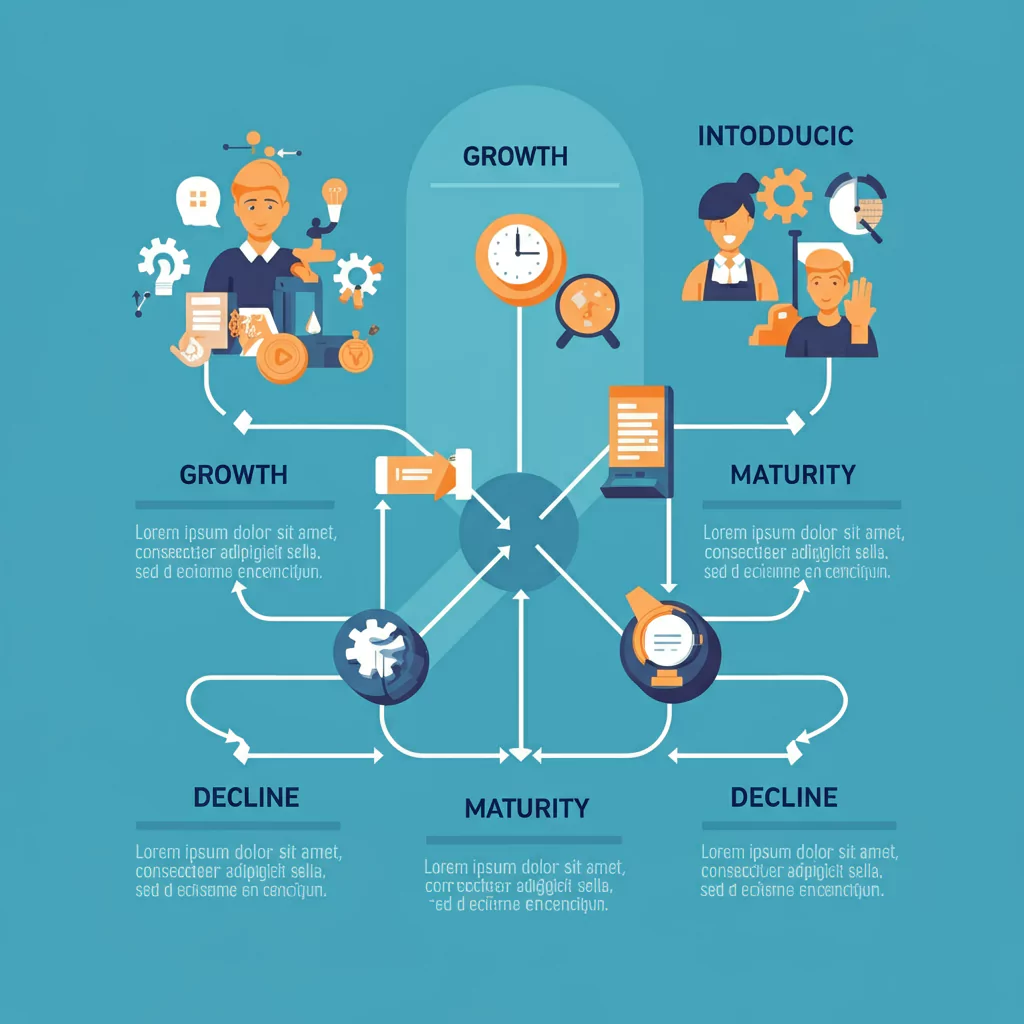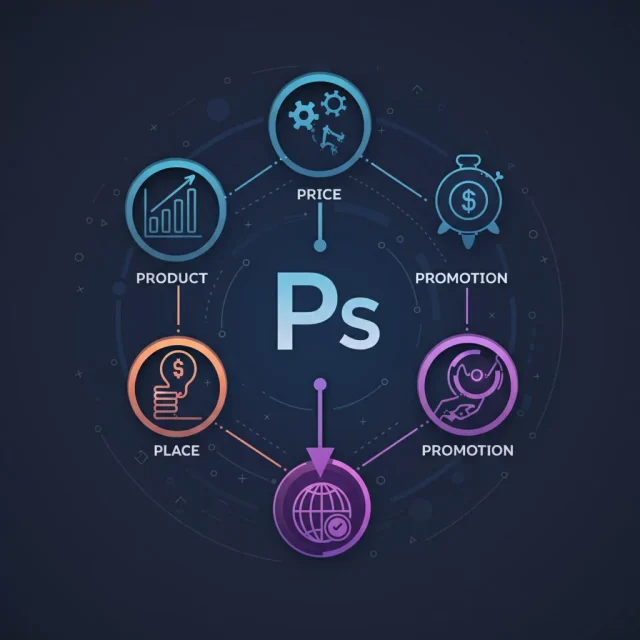Marketing can feel overwhelming when you’re staring at a blank strategy document. Where do you start? What elements should you prioritize? How do you ensure your marketing efforts work together cohesively?
The answer lies in a framework that has guided marketers for over six decades: the four Ps of marketing. This foundational concept, also known as the marketing mix, provides a systematic approach to developing and executing marketing strategies that resonate with your target audience.
This guide will walk you through each of the four Ps—Product, Price, Place, and Promotion—and show you how to apply them to create marketing campaigns that drive real results.
What Are the Four Ps of Marketing?
The four Ps of marketing represents the core elements that businesses must consider when bringing a product or service to market. First introduced by marketing professor E. Jerome McCarthy in 1960, this framework has become the cornerstone of marketing education and practice worldwide.
The four Ps are:
- Product: What you’re selling
- Price: How much you charge
- Place: Where you sell it
- Promotion: How you communicate with customers
These elements work together to form your marketing mix—the combination of strategies and tactics that position your offering in the marketplace. When aligned properly, the four Ps create a cohesive marketing strategy that addresses every aspect of your customer’s journey.
Product: The Foundation of Your Marketing Strategy

Your product is more than just a physical item or service—it’s the complete solution you provide to meet customer needs. This includes features, benefits, design, quality, branding, and customer support.
Defining Your Product Strategy
Start by asking these key questions:
- What problem does your product solve?
- What makes it different from competitors?
- What features matter most to your target audience?
- How does your product fit into customers’ lives?
Product Development Considerations
Core Product: The fundamental benefit or service your customers receive.
Actual Product: The tangible aspects include quality, features, design, brand name, and packaging.
Augmented Product: Additional services and benefits such as warranties, customer support, installation, and after-sales service.
Product Lifecycle Management
Products move through different stages—introduction, growth, maturity, and decline. Your marketing approach should adapt to each stage:
Introduction Stage: Focus on building awareness and educating customers about your product’s benefits.
Growth Stage: Emphasize differentiation and work to capture market share.
Maturity Stage: Highlight competitive advantages and consider product improvements or line extensions.
Decline Stage: Decide whether to revitalize, maintain, or discontinue the product.
Price: Finding the Sweet Spot
Price is the only element of the marketing mix that generates revenue—the other three represent costs. Setting the right price requires balancing profitability goals with customer expectations and competitive pressures.
Pricing Strategy Approaches
Cost-Plus Pricing: Add a markup to your production costs. Simple but may not reflect market value.
Value-Based Pricing: Price based on the perceived value to customers. Often leads to higher profit margins.
Competitive Pricing: Set prices relative to competitors. Useful in highly competitive markets.
Penetration Pricing: Start with low prices to gain market share quickly, then raise prices later.
Skimming Pricing: Start with high prices for early adopters, then lower prices to reach broader markets.
Factors Affecting Price Decisions
Customer Demand: Higher demand typically supports higher prices.
Competition: Direct competitors influence your pricing flexibility.
Cost Structure: Your costs set the floor for pricing decisions.
Market Positioning: Premium positioning justifies higher prices.
Economic Conditions: Economic downturns may require price adjustments.
Psychological Pricing Techniques
Charm Pricing: Prices ending in 9 or 99 (like $19.99) often increase sales.
Bundling: Combining products or services can increase perceived value.
Anchoring: Presenting a high-priced option first makes other options seem more reasonable.
Place: Getting Your Product to Customers
Place refers to how and where customers can access your product. This includes distribution channels, retail locations, online platforms, and logistics.
Distribution Channel Options
Direct Sales: Selling directly to customers through your own channels.
- Benefits: Higher profit margins, better customer relationships, more control
- Challenges: Higher costs, limited reach
Indirect Sales: Using intermediaries like retailers, wholesalers, or distributors.
- Benefits: Wider reach, lower costs, established relationships
- Challenges: Less control, lower margins, potential channel conflicts
Multi-Channel Approach: Combining direct and indirect channels.
- Benefits: Maximum reach, flexibility, risk diversification
- Challenges: Complexity, potential channel conflicts
Digital Distribution Considerations
E-commerce Platforms: Amazon, eBay, Shopify, and other online marketplaces.
Social Commerce: Selling through social media platforms like Instagram, Facebook, and TikTok.
Mobile Apps: Dedicated apps for direct customer engagement and sales.
Subscription Services: Recurring delivery models for ongoing customer relationships.
Location Strategy for Physical Retail
Demographics: Align store locations with your target customer base.
Foot Traffic: Choose locations with high visibility and accessibility.
Competition: Consider proximity to competitors—sometimes clustering works, sometimes it doesn’t.
Costs: Balance prime locations with rental costs and potential returns.
Promotion: Connecting with Your Audience
Promotion encompasses all the ways you communicate with customers about your product. This includes advertising, public relations, sales promotions, direct marketing, and digital marketing.
Integrated Marketing Communications
Your promotional efforts should work together to deliver consistent messages across all touchpoints:
Advertising: Paid media placements in print, broadcast, digital, and outdoor channels.
Public Relations: Earned media coverage through press releases, events, and media relationships.
Sales Promotion: Short-term incentives like discounts, contests, and loyalty programs.
Direct Marketing: Personalized communications through email, mail, and phone.
Digital Marketing: Online strategies including social media, content marketing, and search engine optimization.
Choosing the Right Promotional Mix
Target Audience: Different demographics respond to different promotional approaches.
Product Type: Consumer goods often require different promotion than business services.
Budget: Allocate resources across channels based on expected return on investment.
Objectives: Brand awareness requires different tactics than driving immediate sales.
Timing: Coordinate promotional activities with product launches, seasonal trends, and competitive activities.
Measuring Promotional Effectiveness
Awareness Metrics: Brand recognition, recall, and reach.
Engagement Metrics: Click-through rates, social media engagement, and time spent with content.
Conversion Metrics: Sales, leads generated, and customer acquisition costs.
Retention Metrics: Customer lifetime value, repeat purchase rates, and loyalty program participation.
Integrating the Four Ps for Maximum Impact
The four Ps work best when they reinforce each other. Here’s how to create alignment:
Consistency Across Elements
Your product quality should match your pricing strategy. Premium products require premium pricing, distribution through upscale channels, and sophisticated promotional approaches.
Target Audience Alignment
Each P should appeal to the same customer segments. If you’re targeting budget-conscious consumers, ensure your product features, pricing, distribution, and promotion all speak to value.
Competitive Positioning
Use the four Ps to differentiate from competitors. If competitors compete on price, you might focus on superior product features, exclusive distribution, or innovative promotional approaches.
Flexibility and Adaptation
Markets change, and your marketing mix should evolve accordingly. Regular review and adjustment of the four Ps helps maintain competitive advantage.
Modern Applications and Extensions
While the four Ps remain relevant, modern marketing has expanded the framework:
Service-Based Additions
People: The human element in service delivery.
Process: How services are delivered and customer experiences are created.
Physical Evidence: Tangible elements that support intangible services.
Digital Age Considerations
Personalization: Customizing each P based on individual customer data.
Automation: Using technology to optimize pricing, distribution, and promotion.
Real-Time Adjustments: Rapidly changing elements based on market feedback.
Building Your Marketing Mix Strategy
Start by thoroughly understanding your target market, then develop each P with your customers in mind:
- Define your product based on customer needs and competitive gaps
- Set your price using market research and financial analysis
- Choose distribution channels that reach your target audience effectively
- Develop promotional strategies that communicate your value proposition clearly
Remember that the four Ps are interconnected. Changes to one element often require adjustments to others. Regular testing and refinement help optimize your marketing mix over time.
Your Next Steps in Marketing Mix Mastery
The four Ps of marketing provides a proven framework for developing comprehensive marketing strategies. By systematically addressing Product, Price, Place, and Promotion, you create marketing campaigns that work together to achieve your business objectives.
Start by auditing your current marketing mix. How well do your four Ps align with each other and with your target audience? Identify gaps and opportunities for improvement, then develop an action plan to optimize each element.
Success with the marketing mix comes from understanding that it’s not just about individual tactics—it’s about creating a cohesive strategy where every element supports your overall business goals. Master this approach, and you’ll have a solid foundation for marketing success.
Learn more about: How to Create a Successful Traditional Marketing Campaign









